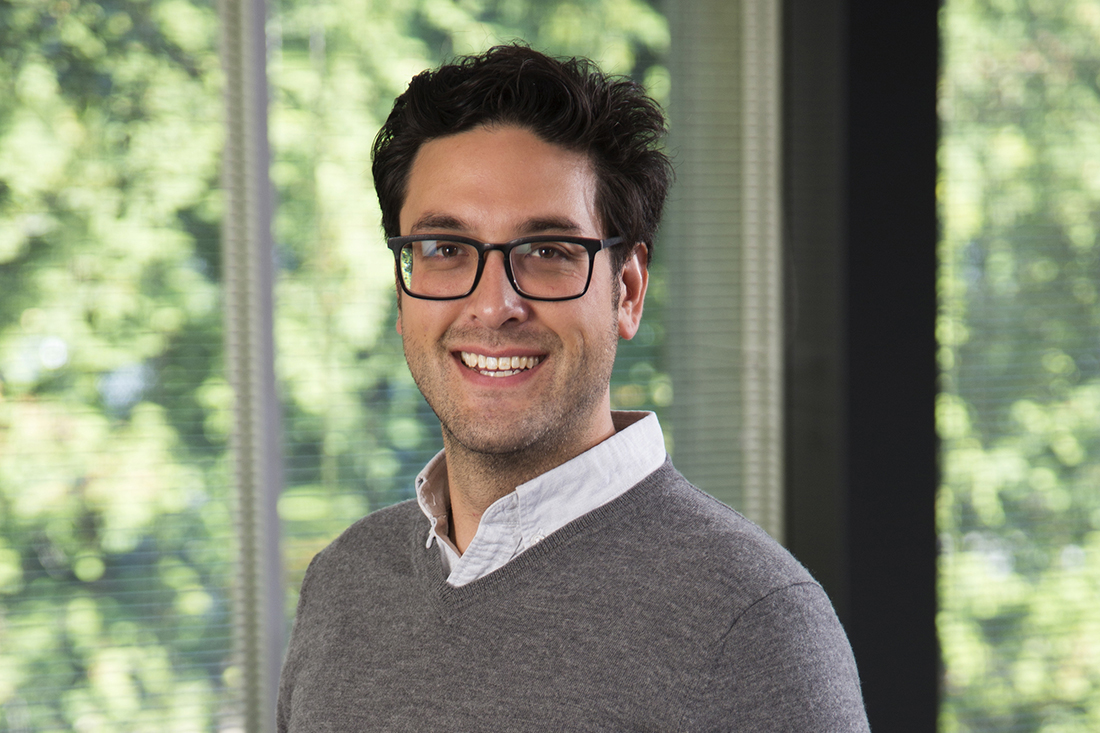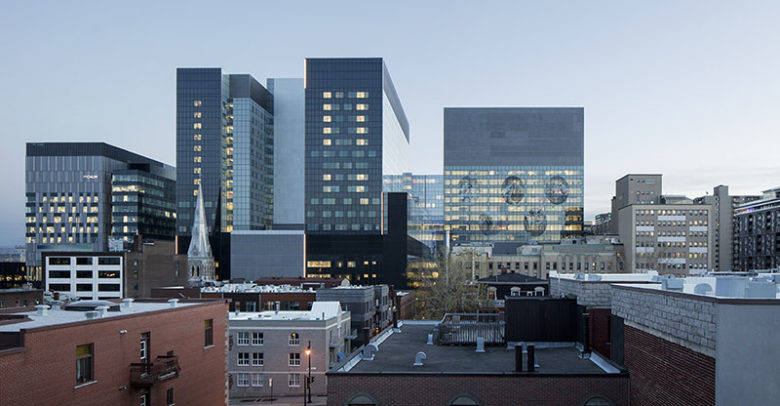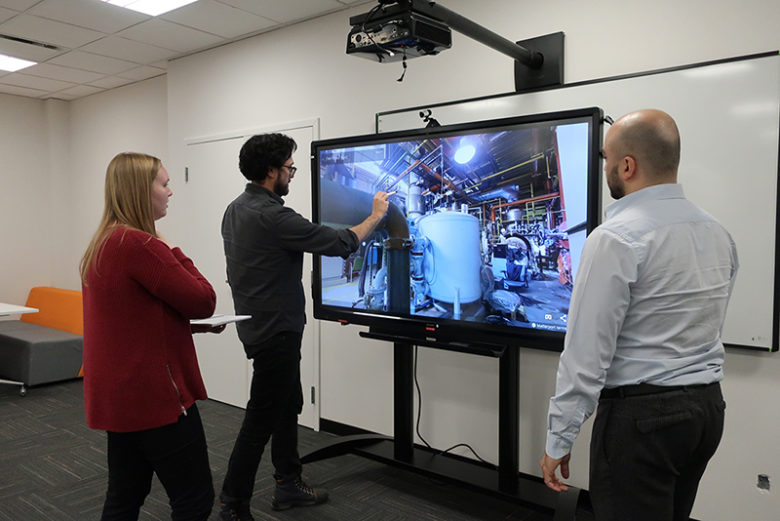
Akira Jones joined HH Angus in 2012.
What do you like most about working at HH Angus?
It’s the people, which I say to anyone who works elsewhere! This company has done a great job of bringing on people who are friendly and open, and this supports a very social environment. I’m happy to come to work every day, and I genuinely like the people I work with. When people ask me in social situations about my work, I always say, “It’s a great place to work!” And then my wife jumps in with, “oh, he loves his job so much!” I spend more time here then I do anywhere else, so it is really important to me that it’s a good place to work, it’s comfortable, management is great, it is open door everywhere – it’s the best!
How do you contribute to the design and construction of the built environment?
I joined HH Angus as a Revit specialist on the massive CHUM hospital project in Montreal (Centre hospitalier de l’Université de Montréal), where I supported our team by troubleshooting issues and managing the Revit and BIM aspects of the project. Then I transitioned into project engineering, because that’s my background, and I did project engineering on CHUM and a variety of other projects, including BMO Field, which was a very enjoyable project. Then, I began doing purely BIM work and now serve as the BIM manager. My team supports all HH Angus projects on the BIM-related aspects of our projects – hardware, software, troubleshooting, process, providing interface with other consultants regarding BIM issues, etc.

Centre hospitalier de l'Université de Montréal

BMO Field
How has HH Angus helped you grow in your career?
The company has always provided me with a lot of latitude to try new things and explore new technology. They provide all the support and training I need to do that. Being able to try new ideas allows staff to own their own growth, with the support of formal training and mentorship. I’ve had great mentorship from senior managers here, who provided so much insight and support early in my career to help me continue to progress. When you’re starting out, getting that kind of knowledge transfer from somebody who has a lot more experience, and who is willing to take the time to pass it on and guide you through your career, that makes a big impact on all of us here.
Why did you want to become an engineer?
As a kid, I really liked building stuff. I loved Lego and toys like that. My family also has a history of DIY renovations around the house, so I was always learning how to do things. Also, I was good at math and science and I assumed engineering would be the best option. How I got into consulting? I think it was pure luck; it could have been anything. But, I am very happy where I ended up, because now I get to do work that I am passionate about.
The company has always provided me with a lot of latitude to try new things and explore new technology. They provide all the support and training I need to do that.
What have been some significant projects for you?
CHUM, obviously – it’s probably the biggest project that I’ll ever work on! It had so many different moving parts, so many great teams. I gained so much experience – technical, project management, project administration, and so on. I came onto the project as a Revit expert and came out of it knowing even more, which is great. We had the opportunity to try many different approaches, software-wise and technology-wise, on CHUM and we were able to push the boundaries of BIM, which I thought was great.
Another significant project was BMO Field – it was a great project with an amazing team. It was a special because BMO Field is a landmark in Toronto, and we were able to contribute to making it a world-class soccer facility for professionals. That was pretty cool – a great learning experience.
Describe a typical day for you.
Much of my role is keeping my team moving, helping them with issues they need answers to. It doesn’t mean that I always know the answer, but I sometimes will offer a suggestion and say ‘try this and see if it works out’. I connect with clients; I have active projects, so I deal with issues on those projects; I work a lot on the technical and knowledge management aspects of our projects. A lot of my work is answering questions, solving challenges, and helping people to do the work they are trying to deliver – that’s a big part of being a manager.
What are some of the things you like about HH Angus, outside the technical work?
I love the social events - the Stampede Breakfast, Golf Day, the Christmas Luncheon. I love that we have a formal dinner dance for the entire staff every couple of years to celebrate our long-time employees. It really shows what is great about this company - you can see when we are all together in a social setting that everybody is smiling, everybody is having a good time, everybody is happy. That says a lot.
What are some accomplishments you’re proud of?
There are a couple of things, actually. One is the Matterport scanner – I introduced it to the company and now it’s constantly in use. The employees enjoy it, the clients enjoy the benefits – that’s a great tool.
Another proud moment was finishing BMO Field. It was an extremely fast-paced, two-phase project that had to be delivered in time for the start of the soccer season. There was a very aggressive schedule. Everybody involved really had to step up. So, when both phases were completed, it was a very proud moment for me on behalf of HH Angus because, as a team, we came together and made that work.
How do you explain your job to someone outside the engineering industry?
I think most engineers experience this: somebody spots the engineer’s ring and says, “oh, you’re an engineer, so you must know how to do this or that.” Most people have only a vague idea about what engineers do and don’t really appreciate that we specialize across such a wide variety of engineering fields. So when I tell people what I do, I say that I use technology to facilitate the engineering work that we do, and keep it very simple so people’s eyes don’t glaze over. Because it’s somewhat complicated when you get into BIM and database-driven design, Revit models and databases and 3D visualization

Akira with his team
What are trends in engineering that excite you?
Engineering is changing. There are so many different aspects to data and Big Data, and you can already see the impact of analytics. Large construction companies are using analytics to increase their abilities, and to manage and gain information about the project; for example, safety information or construction scheduling.
We are also able to make better decisions based on the information we have. It is not only to being able to automate some of the work that we do, but also to use technology; for example, generative design. It is not necessarily that we do the work faster, but we can do exponentially more tasks faster. A computer can generate a thousand good options on how a building could be oriented, versus engineers using our judgment and experience and saying, “well, based on my years of experience - this is the best”. Now, the computer will give you a thousand options that are better than you could ballpark.
The ability to make really good decisions about creating efficient designs is important, because a big part of what we should be thinking about is sustainability. We have a huge part to play in creating buildings that approach Net Zero, and technology can help us make better decisions sooner, so we can create those designs. I think that’s interesting. We hear a lot about AI machines, etc. I think that’s coming, but it may be a bit further away for consulting engineers specifically; but, we certainly can automate the work that is repetitive and labour intensive.
Is artificial intelligence going to affect the human element of our industry?
It will. Every time there is a paradigm shift in how we work, people fear that - “what are the people who do this work going to do?” But, the reality is that new technology makes the pie bigger and provides opportunities for new types of work that employ more people. This means that there will be more work that is fruitful and less work that is repetitive and unstimulating. There are so many examples: people thought ATMs were going to end tellers’ jobs. However, ATMs allowed banks to open more branches, serve more customers, and actually employ more tellers. That’s a great example of how this works. So we are going to see shifts like that.
What skills or traits have helped you advance in your career?
Persistence! Never give up, that’s the thing - you have to keep going. Never lose the will to learn something new. We are living in a time of change – you have to be able to change how you do things at any age, you have to be able to learn something new every day and never lose the urge to try something different. Also, be kind to the people around you – HH Angus is a great example of that. This place always keeps itself moving, but it is also important to take time to help somebody, because you never know when you are going to need help.
What would people be surprised to know about you?
I really like cooking! Maybe people will be surprised to know that. And I really like taking back-country canoe trips. That’s something my wife and I have done a lot in the past and one of our favorite things to do. I also like to play Frisbee.
